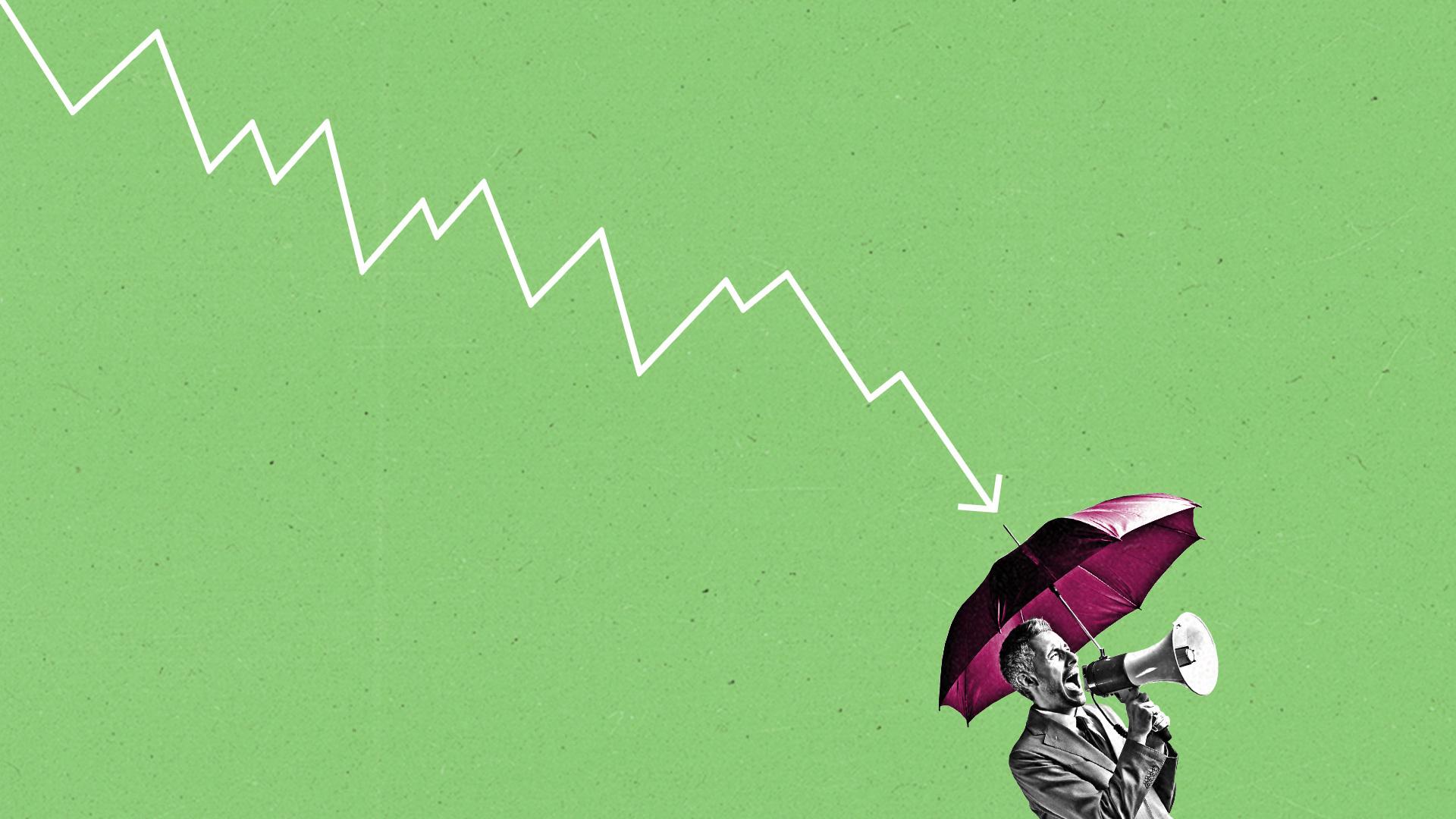‘Anchors of stability’: Three reasons why brands should maintain advertising during a recession

Illustration by Holly Warfield / Getty / The Current
With soaring inflation, rising interest rates, and a volatile marketplace, many analysts are predicting that an economic recession is on the horizon. Bloomberg forecasts a 38 percent chance of a U.S. recession in the next 12 months.
As we’ve seen with past recessions (through multiple studies and examples), how a brand responds during an economic downturn can have a significant impact on business in both the near and long term. Even though there’s a natural human inclination to pull back, save more, and ride out economic lows, the advertising strategies of companies and brands should recognize the opportunity to gain share even in volatile conditions, according to experts.
“As we’ve seen in previous recessions, brands that continue to engage with consumers in emotionally meaningful, culturally relevant ways can build mind share and drive sales, while those that reduce or stop their advertising are often left out of purchase decisions,” says Matt Kleinschmit, founder and CEO at full-service research consultancy Reach3 Insights. “Brands that help consumers navigate this environment can build trust and emotional connection that will influence purchase behaviors both now and into the future, as economic conditions stabilize.”
Hold on to market share
Analysts point to the potential of losing market share to competitors as one of the major reasons why brands should not cut back on ad spend during a recession. When name brands pause advertising, private-label brands and competitors seize on the moment. Shoppers are already seeing this effect. Discount grocery chain Save A Lot, for instance, just announced a new campaign looking to capture market share away from national brands with lower-priced interpretations of their products. Instead of, say, a pack of Oreos that can cost up to $5, the chain sells Cremesations for as low as $1.69 a pack. With rising prices for everyday staples like groceries, gas, and housing, Save A Lot is banking on effective advertising and how it may appeal to more cost-conscious consumers.
“The idea of a recession will mean there is a smaller market base to go after. Fewer consumers will want your product or want the product of your individual vertical,” Alexander Potts, vice president of programmatic and media lead at independent ad agency Tombras, tells The Current. “But that means you’re going to have to work even harder to win those customers over.”
J. Walker Smith, knowledge lead in the consulting division at data analytics and consulting company Kantar, points to success stories like PepsiCo and P&G, which both continued to spend on advertising and stayed the course of their planning at the height of the coronavirus pandemic in 2020, and were thus able to grow their net revenues, unlike their competitors.
Subscribe to The Current
Brands can act as ‘anchors of stability’
There’s yet another reason why brands should want to be ever present in the lives and minds of consumers: to quench the need for permanence in an always-fluctuating world — especially in times of insecurity. Smith describes that human longing as a demand for “risk reduction.” Brands, he tells The Current, have the opportunity during such times to provide the “comfort food” society is craving and act as “anchors of stability.” Then, as people more deliberately prioritize what they want to spend their hard-earned money on, brands can show exactly why their products matter.
“Brands should provide guarantees that take the risk out of buying,” says Smith. “In particular, brands should add value back, not take value out. If brands respond to inflation by taking value out, then consumers lose the reasons they have for keeping a brand in the priority bucket. What this means varies by category and brand, but the fundamental idea is the same: Add value back. Which means advertise and innovate.”
Potential for more inventory at lower costs
In the ad market, once demand falls for ad inventory, similar to the stock market, a broader selection of slots go on sale, especially when buying programmatically. “If budget pullbacks happen widely, those who do continue to spend may find improved prices and more inventory availability,” says Ross Benes, senior analyst at Insider Intelligence. “In these scenarios, economic downturns can give brands a chance to get more bang for their buck. Brands also need to keep driving sales during hard economic times, and advertising can help move product.”
Buying programmatically and zeroing in on digital channels helps brands be more data-driven and precise during periods of economic instability. When looking to maximize the potential of every ad dollar, Potts suggests that brands lean toward a “data-driven approach that actually showcases the impact their dollars are having on the overarching business.”
“Just because the business isn’t doing well,” Potts says, “doesn’t mean that the advertising isn’t working.”